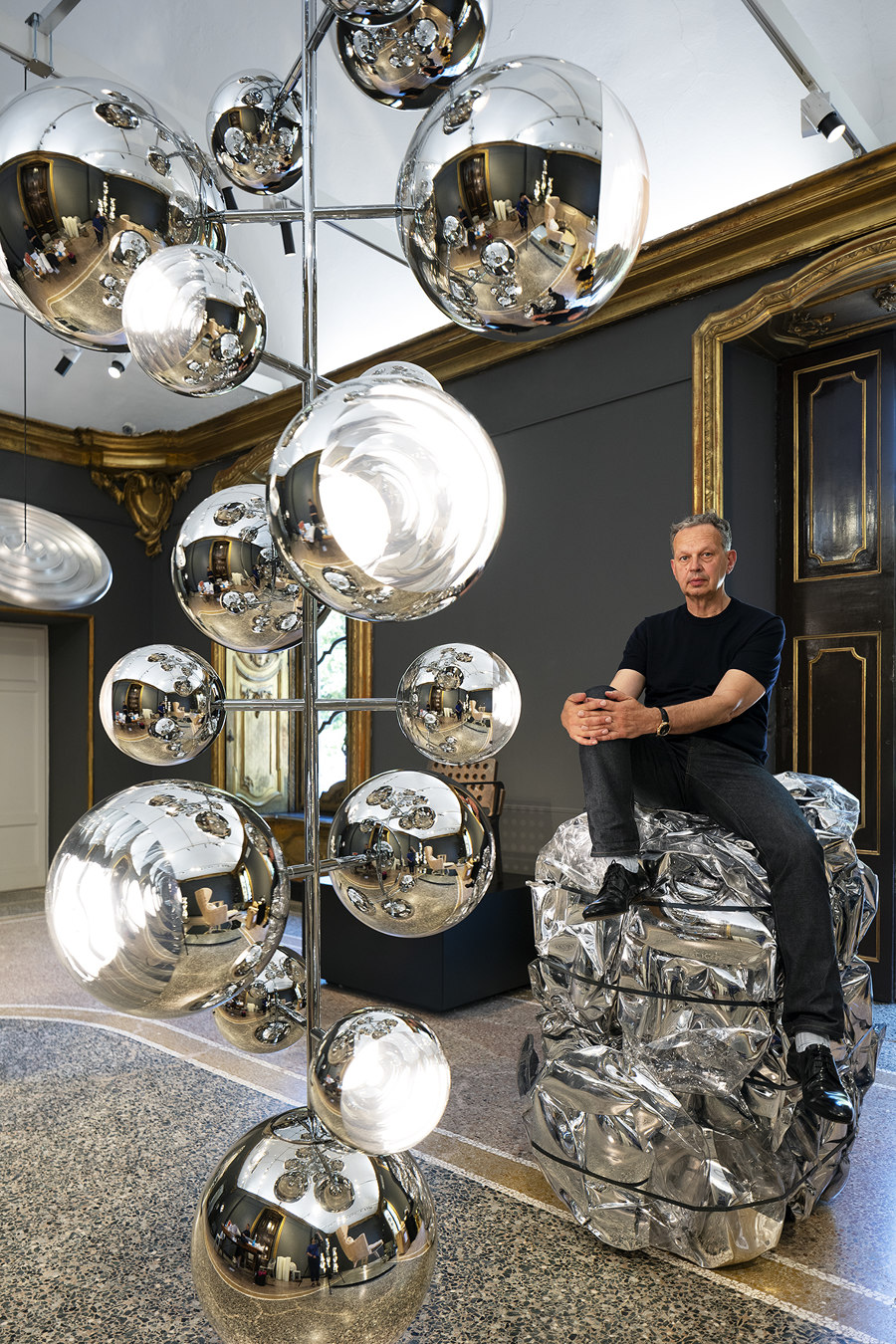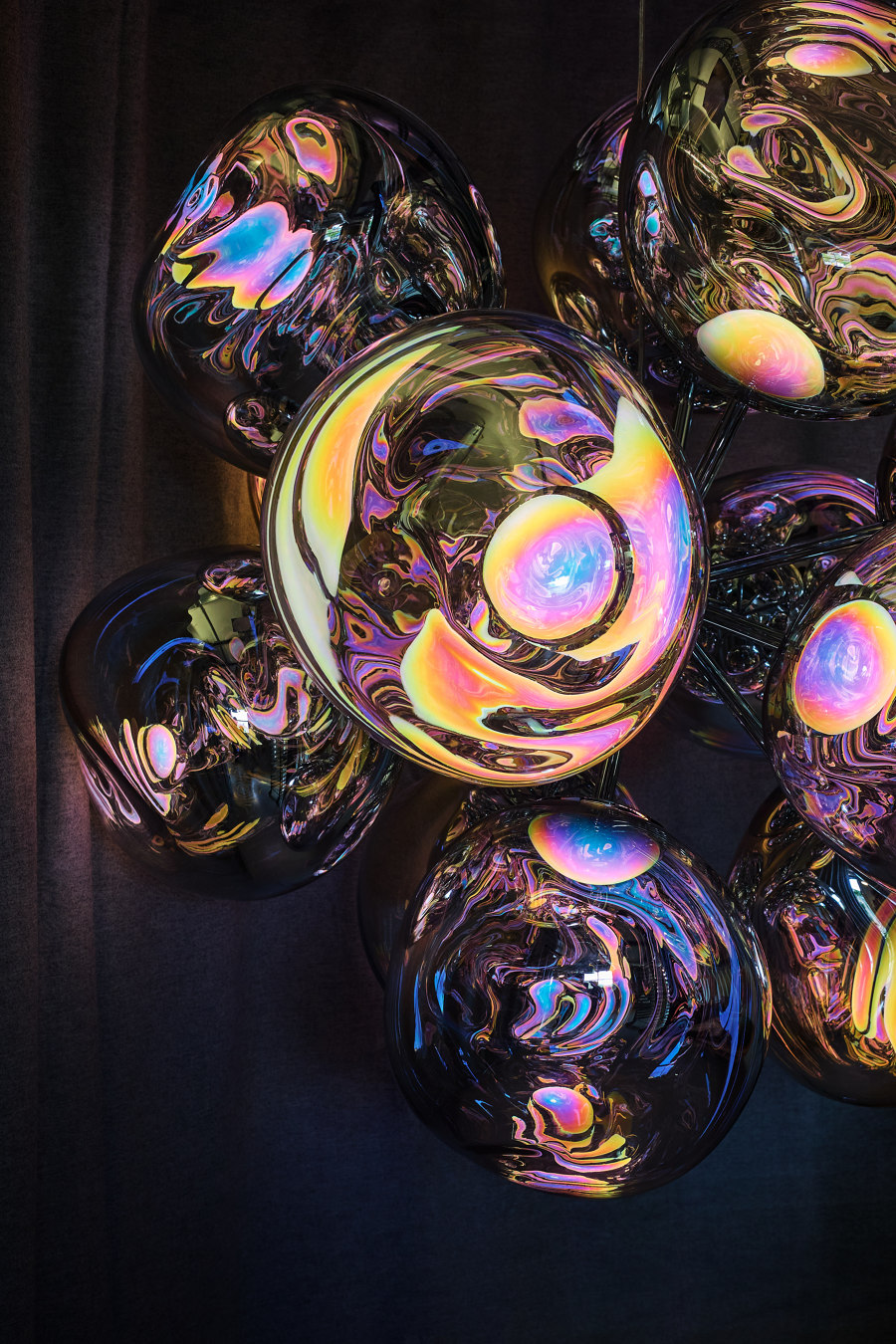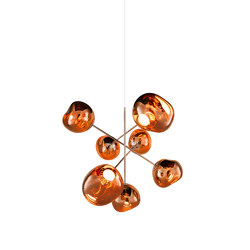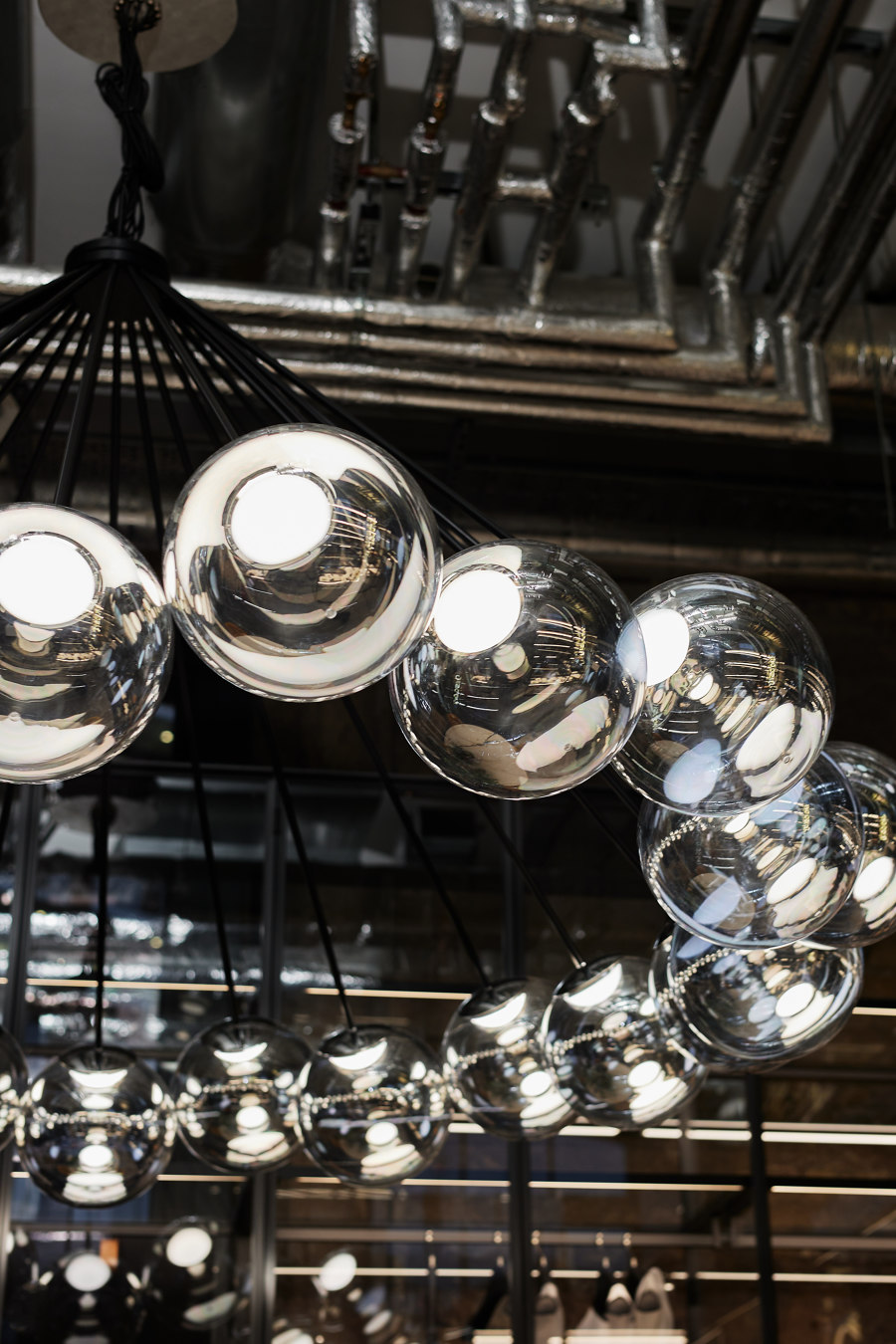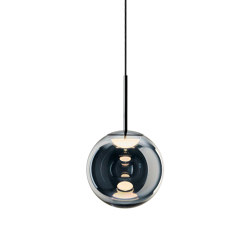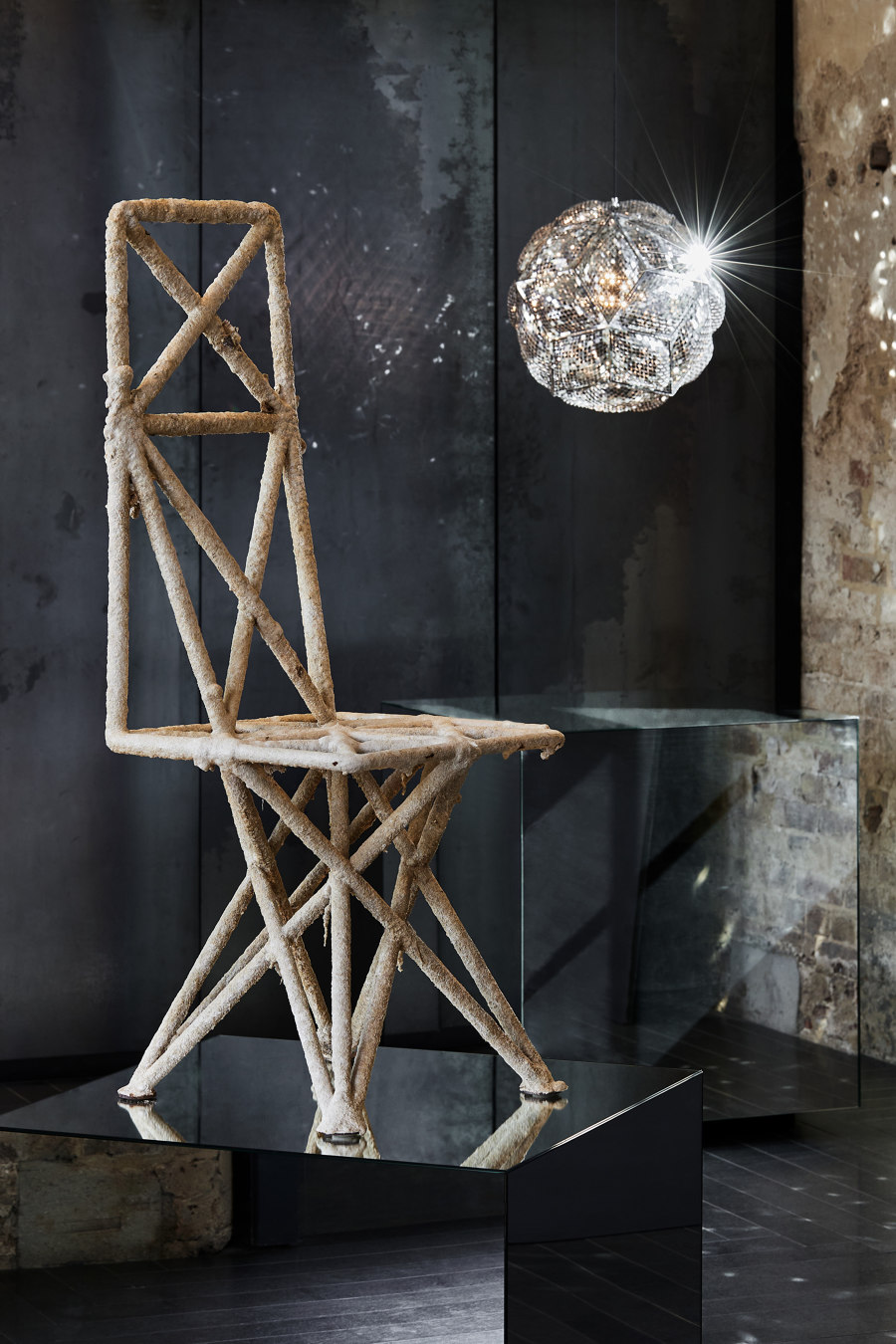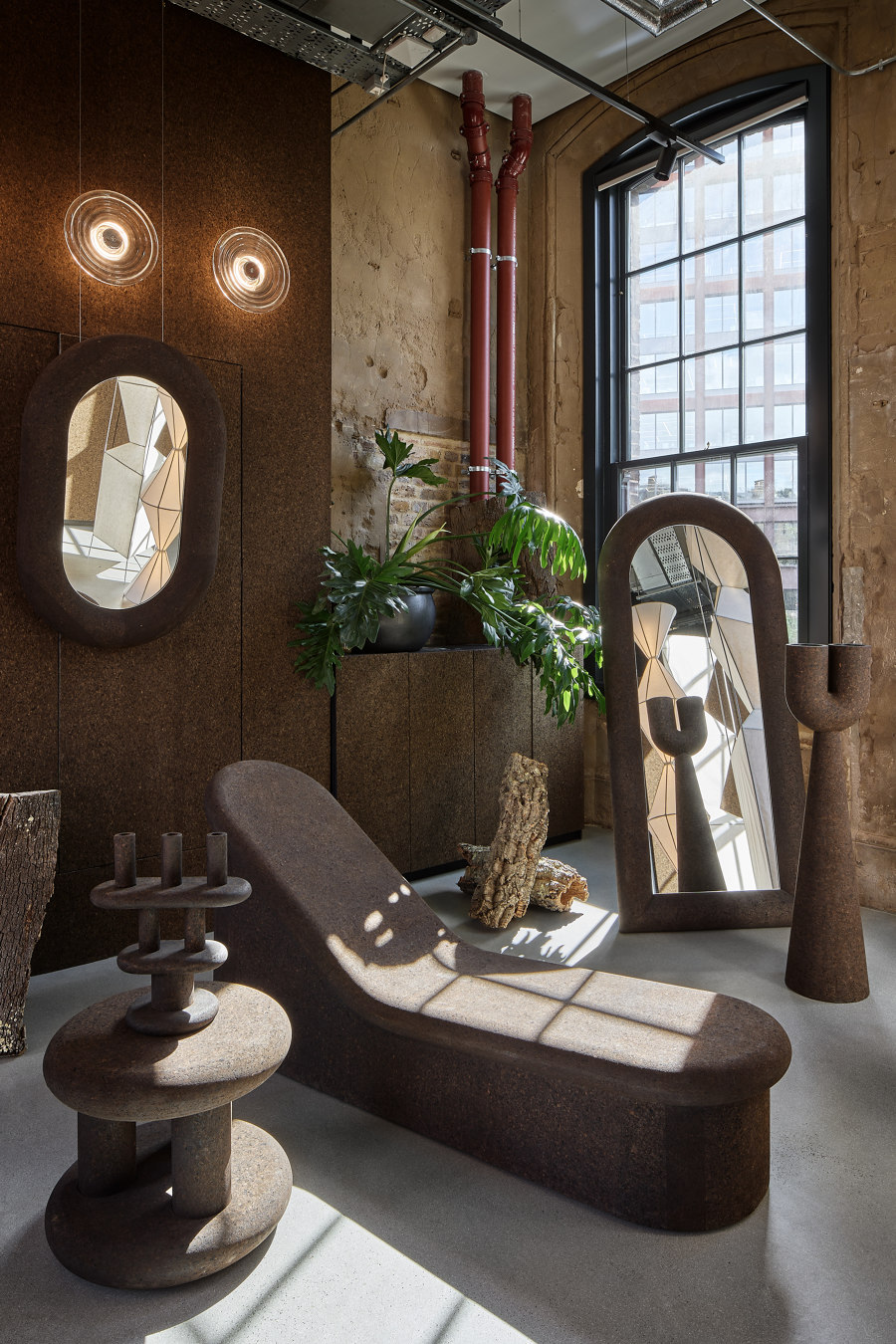Tom Dixon celebrates twenty years of material curiosity
Brand story by Emma Moore
London, United Kingdom
24.10.22
Reflecting on the designer's relationship with material experimentation, Tom Dixon's TWENTY exhibition showcases some of his known and unknown designs, while looking forward to the next chapter.
Tom Dixon’s TWENTY anniversary exhibition at the brand’s Coal Office complex during London Design Festival last month
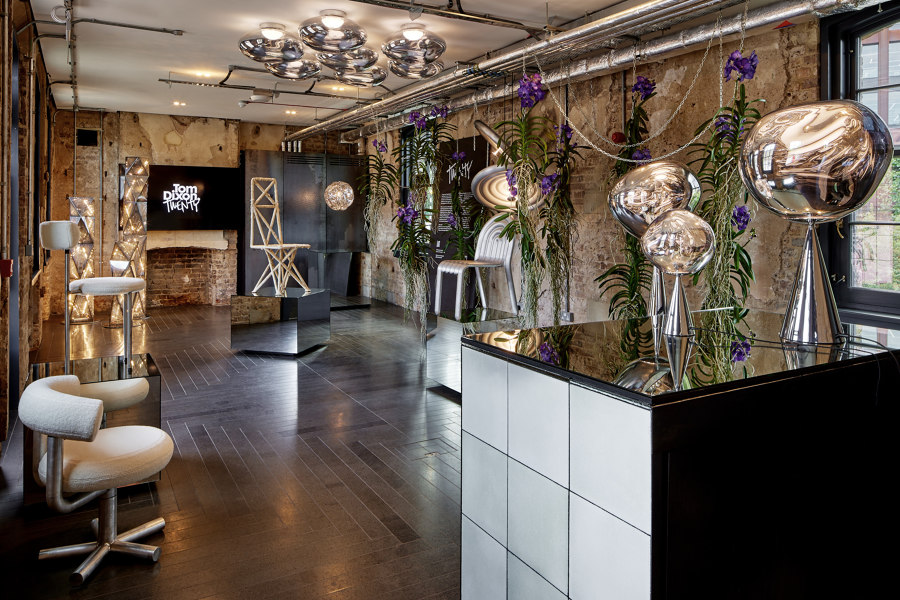
Tom Dixon’s TWENTY anniversary exhibition at the brand’s Coal Office complex during London Design Festival last month
×Talking to Tom Dixon is a lesson in not standing still. Not as a designer, not as a businessman, not as an interviewee, nor interviewer. We meet at the showcase of his exhibition TWENTY during London Design Week in September, and review the anniversary display of experiments dotted around his Coal Office complex. It turns out that the marking of a milestone – in this case twenty years since the eponymous brand was formed – is as daunting to the busy designer as it is to an anniversary-jaded journalist. But after mulling, Dixon decided to grab the opportunity to reflect, review, rework and reimagine projects and processes for the future. And for my part, I soon saw the chance to gather some hard-earned industry wisdom.
Tom Dixon with the Mirror Ball chandelier, made of 100% recyclable polycarbonate
Reflect, review, renew
'I never think that things are really finished in this business,' he admits. 'Unlike tech or cars, you don’t upgrade models. You make your thing and then it's the same forever. So, it seemed like a good excuse to reexamine some of the things that got us to where we are, pull out some things that we never showed, because there are some things that are interesting but that never went anywhere, are still waiting for the right moment, were before their time or missed the target. And then also to bring in some thinking about the near future, which inevitably has to include something about the sustainability problem.'
'I never think that things are really finished in this business'
What’s particularly notable is the breadth of materials on show. Sure, there’s a lot of spheres and cones in glass and mirrored metals – the signature Tom Dixon style we know and love from the hotels and restaurants that have adopted the pieces over the past two decades. Think of bestsellers such as Mirror Ball, Beat and Globe lights. There’s even a show-stopping update on these in the form of the Dichroic Melt chandelier. But in fact, long before carbon-crushing drove a preoccupation with the make-up of our furniture, Dixon’s inquisitive investigation of materials – their provenance, their properties and their potential – has driven his practice.
A new version of the popular Melt lamp (top), the large Globe chandelier prototype (above) and the Hydro pendant prototype, presented here together with the limited edition Hydro chair (below)
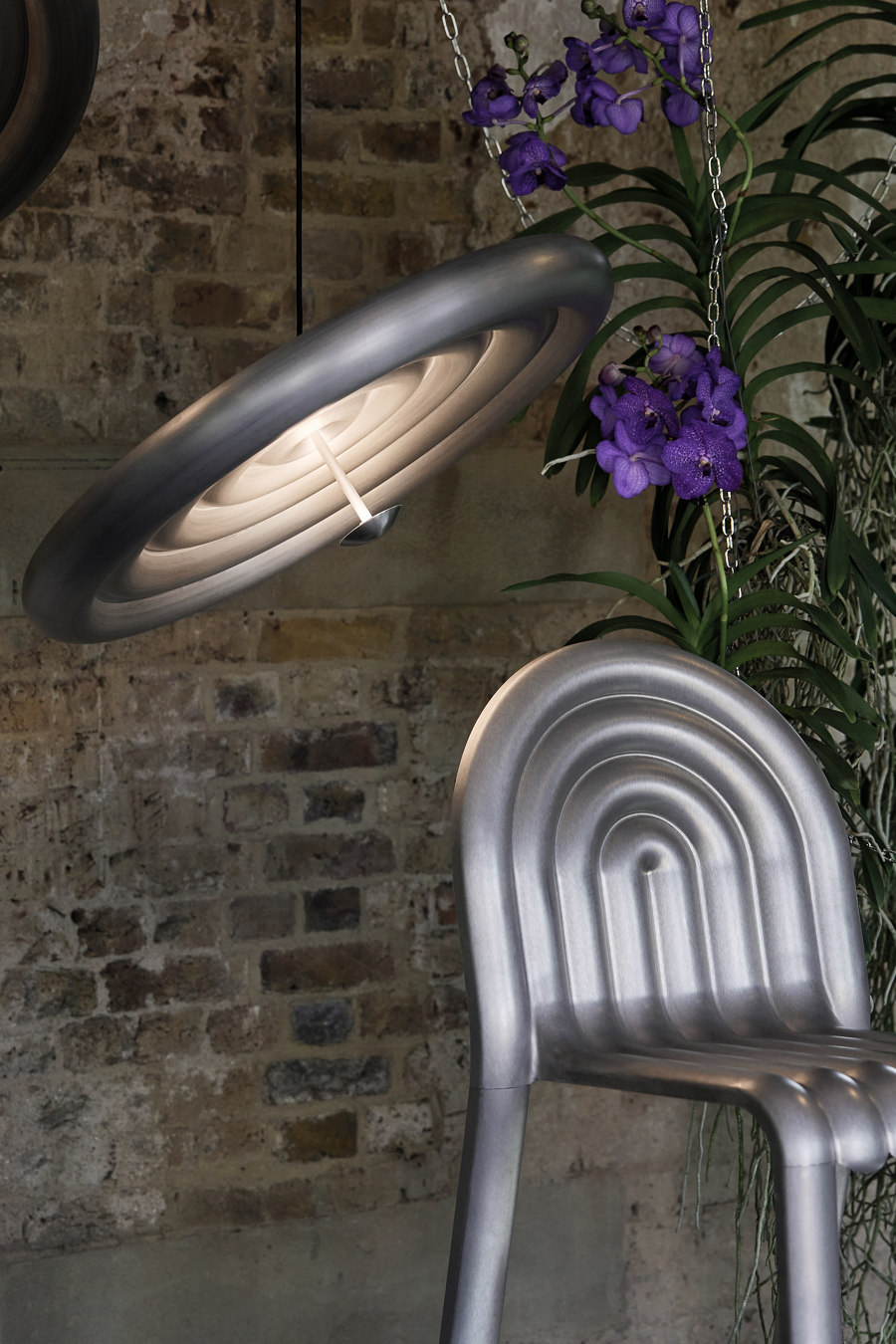
A new version of the popular Melt lamp (top), the large Globe chandelier prototype (above) and the Hydro pendant prototype, presented here together with the limited edition Hydro chair (below)
×Meaningful materials
The Biorock chair is a showstopper at the opposite end of the commercial scale to the Melt chandelier. It is an experiment that will likely never go into full-scale production; as Dixon says, ’it’s more a conceptual way to design a chair’. But it’s a talking point; designing – and in fact growing – furniture with an ecological agenda. Beginning as a structure made from metal rods, the chair was sunk off the Bahamas and an electric current applied. Chalky marine debris built around the metal creating a sort of natural concrete. An experiment in underwater factory production, the Biorock chair highlights opportunities for coral regeneration and beach preservation. 'We’ve had a couple of interesting conversations with people that have hotels with a beachfront,' says the designer. 'Perhaps another project could come out of showing it.'
The conceptual Biorock chair grown at Tom Dixon’s own site in the Bahamas
More serviceable is the aluminum Hydro chair. It is light, has indoor-outdoor versatility and is the embodiment of Dixon’s design ethos. 'This is a kind of archetype of what I try to design; it’s decorative but it’s completely rational at the same time. The decoration comes from the structure – corrugation is the obvious way to stiffen a sheet of aluminum.' It also exemplifies his material curiosity; Hydro is made in a Canadian workshop that supplies Tesla, whose use of aluminum is key to reducing the weight of their cars. The pieces, which in the TWENTY exhibition are joined by Hydro pendant prototypes, showcase joins made with an innovative adhesive in place of welding.
The eelgrass Bird chair prototype, meanwhile, perfectly demonstrates how an old archive design can have a new, more sustainable life
Exploring the lightweight robustness of cork as a material too, the studio exhibits new Cork prototypes, including a chaise longue and a free-standing candelabra, that fill out this family of nomadic indoor-outdoor design. It’s a very contemporary category of furniture that is light enough to lift, but tough enough to withstand climatic assaults.
The Cork room of the TWENTY exhibition (above) and the iconic Bird chair, updated in an eelgrass version as part of Tom’s experiments with new, sustainable materials (below)

The Cork room of the TWENTY exhibition (above) and the iconic Bird chair, updated in an eelgrass version as part of Tom’s experiments with new, sustainable materials (below)
×Moving materials on
The eelgrass Bird chair prototype, meanwhile, perfectly demonstrates how an old archive design can have a new, more sustainable life. Nordic eelgrass has many sustainable qualities; here it replaces the upholstery padding that forms the chair. And a thoroughly modern material – mycelium – usually embraced as a biodegradable packaging substance, gains its own identity as a fragrance tower designed to emit scent into the home.
In the world of Tom Dixon, products issue from chance conversations, observations, connections and playful experimentation. It’s an approach that serves him well. What taking a moment for hindsight has shown is that the essential design of a product doesn’t necessarily expire with time, it may just need to be revisited and future-proofed with new materials and tweaks for new human behaviours.
© Architonic
Head to the Architonic Magazine for more insights on the latest products, trends and practices in architecture and design.


